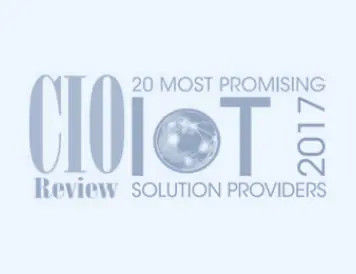




Application Modernization Services
What we do in terms of re-engineering
System analysis
Restoring / elaboration of documentation
Extension of system capabilities
Refactoring
Integration of modernized application into IT infrastructure
Migration of languages, databases, platforms
Reengineering by adoption of Service Oriented architecture
Replacement of legacy app with off-the-shelf software
Why Do I Need to Modernize My Software?
Top 8 indicators of when it’s time for modernization
-
Complicated interface
The software does the job, but users complain about the interface, spend too much time doing trivial things, or cannot locate features.
-
Performance is unacceptably slow
The software is functional, but as the number of users grew, or the database became bigger, it started to work unacceptably slowly.
-
Bugs
The software is mostly working, but there are bugs the previous team cannot fix.
-
Self-made prototype
The software is a self-made prototype. Now you need a “professional” version.
-
Not finalized project
The software is partially functional. The team who started on it is unable to continue, or you have decided to replace them.
-
Old version of CMS
The software is built on the older version of the CMS. A user wants to benefit from the new features, but custom modules are written in such a way that they cannot be upgraded easily.
-
New features are needed
The software is working fine, but needs new features added and the previous team is not available.
-
Legacy software
The software is outdated and needs drastic improvement in a situation where you can’t simply replace it with new software.
Important Facts About Software Modernizaton
What you need to know before you start re-engineering
Analysis comes first
There is specific risk that must be accepted by all parties: we cannot make any estimates or implement anything before we investigate the existing solution and analyze the code. Even after that, there’s still a risk of identifying bugs or unexpected solutions created by previous developers. Addressing them is our job, but this risk exists.
T&M engagement model
Because of the described risk, we offer only the Time and Material engagement model for software modernization projects:
- payment is based on hourly rates
- all additional expenses are negotiated before the project start
- timely project reports
- control over deliverables
Qualified team
Reengineering can be done only by highly qualified developers with solid expertise in software modernization and knowledge of various technologies. The procedure doesn’t make sense otherwise.
Milestones in Modernizing Legacy Software
Important steps we take:
Analysis
The first and most distinct part of the job is analysis. The deliverables are:
-
functional specification
-
technical specification
-
test plan
-
test report
Project Proposal
On completion of the analysis phase, we are ready to come up with a project proposal and estimate the work that has to be done. The project proposal includes:
-
project assumptions
-
project team
-
detailed project estimate
-
hourly rates of specialists
-
timeline
Software Modernization
In most cases we will offer the Agile development approach based on SCRUM methodology. Depending on the project, typical changes include:
-
user interface transformation
-
code refactoring
-
extension of capabilities
Quality Assurance and Support
Besides standard quality assurance procedures, our documents everything in sufficient detail and in an easily accessible form for developers and other stakeholders.
-
project quality assurance
-
solution testing
-
project documentation
We are open to seeing your business needs and determining the best solution. Complete this form, and receive a free personalized proposal from your dedicated manager.

Sergei Vardomatski
Founder

